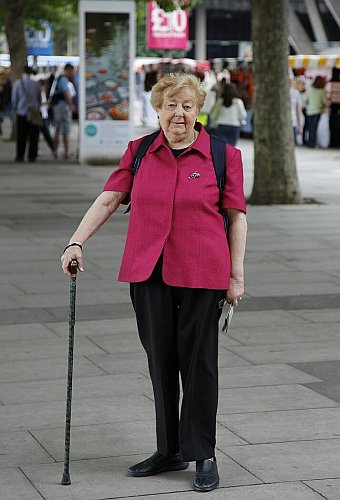
♥ Mum – the loving supporter ♥
The problem is loving feedback is not honest Joe advice…
Sometimes we should ignore the love option.
The people you love are wonderfully supportive but probably won’t give the appraisal of your photography that you need. An informed, impartial and analytical opinion will help you understand what you need to improve.
It seems hard, but your family or great friends are probably going to like your work or conceal that they don’t like it. They don’t want to offend you or spoil their relationship with you. If you want to improve your photography you need an objective assessment of your work. You want someone to sensitively point out the good, the bad and the potential.
So just how do you find people who can help you. Here are some ideas…
- Join a photography club and ask other members to look at your photos.
- Enter competitions at a club, the judges often give a technical appraisal.
- Find a professional/semi-pro who is prepared to do a little mentor work.
- Find someone on a photography website or forum who is prepared to swap candid appraisals with you.
- Find an artist who would be able to give you composition help and advice.
- Get to know an art or photography graduate who understands the principles of photography.
What you should look for from these people is advice that…
- is sensitive and supportive – with your best interests at heart.
- objective, trustworthy, honest and informed.
- will not belittle or trash your work.
- will be positive and upbeat about the successes and good points.
- won’t pull any punches – will tell you if there is a problem or issue.
- will give you ideas about how to tackle your mistakes/problems.
- is able to command your respect.
It may not be easy to find these people. So you should get to know a range of people in photography. You will find people who fit these profiles in lots of places. You just need to be determined and interested in developing your photography. They will help you because they want to, you will both be of like mind, and ultimately it is to the benefit of photography if we all share. Besides, it is fun if we help each other.
The broad approach
Your family and friends opinions are valid and useful. So are the opinions of those you work with and even people you do not know. Everyone is entitled to have likes and dislikes about photographs they see. However, these are people who may not understand photography is an art. They…
- may not be positive about your work.
- might say upsetting things without realising the impact they are having.
- might not like your photograph, but may not be able to tell you why.
- come out with erroneous reasons for their dislikes.
- may not be supportive or may even be openly hostile.
- might make silly or inappropriate suggestions about how to improve.
Yet, despite these shortcomings they have a valid opinion. You need to make your own judgement about how much attention to pay to them. You also need to make up your mind about how valuable it is to have uninformed opinion. In short, if you want to improve your photography you need to understand that opinion in art (photography) is a broad spectrum. And, it is your call as to how much criticism or support you will take from the different people on that spectrum.
With time…
In the long run you will make up your own mind about the opinions you hear about your work. Other peoples’ opinions help you – no matter what their background. It is also important to understand the diversity of opinion how that impacts on you, the photographer. Learning about varied opinions helps you to pick out the good advice form the less useful. Understanding the different types of people and opinion involved is not something you will understand any time soon. It is something that artists and photographers think about every time they meet someone with an opinion. How you handle those opinions is a personal approach and one you develop with experience. Actively seek opinions and you will get the experience quicker.
 Photokonnexion tips by email
Photokonnexion tips by emailIf you enjoyed this article please sign up for our
daily email service.
Find out more…
Photokonnexion Photographic Glossary – Definitions and articles.
Suggested reading:
Doing a photo critique – Part 1: respect and sensitivity
Doing a photo critique – Part 2: the method
We would love to have your articles or tips posted on our site.
Find out more…
Write for Photokonnexion.



